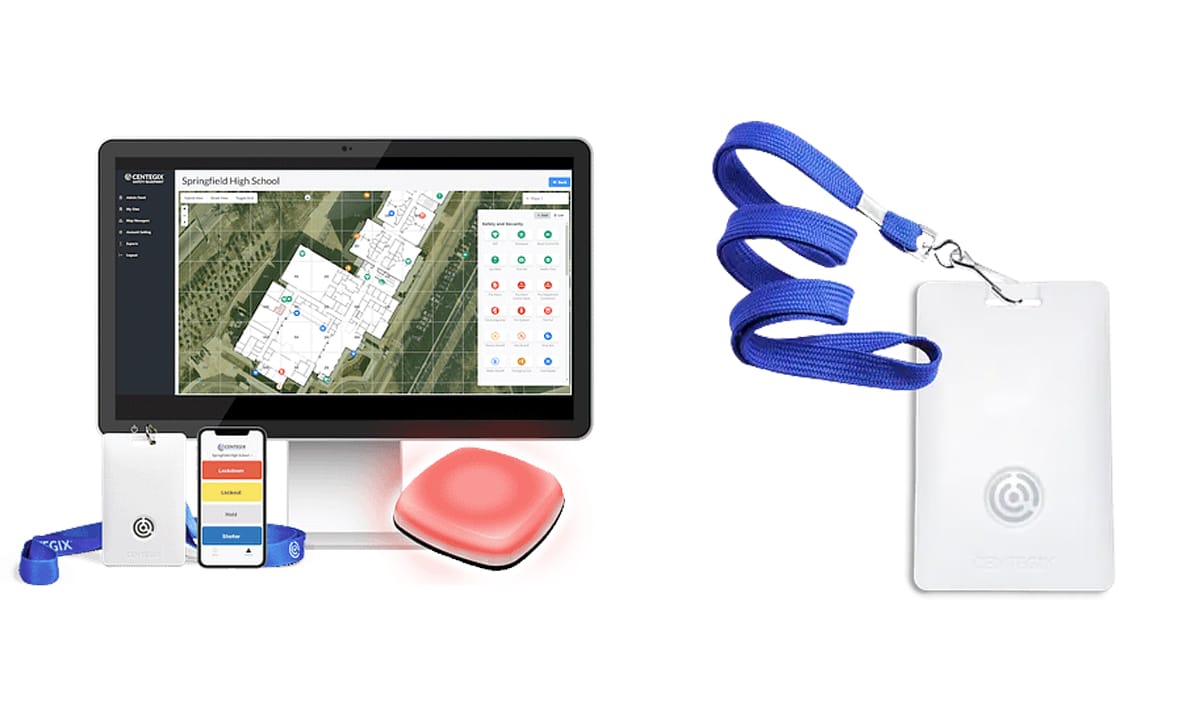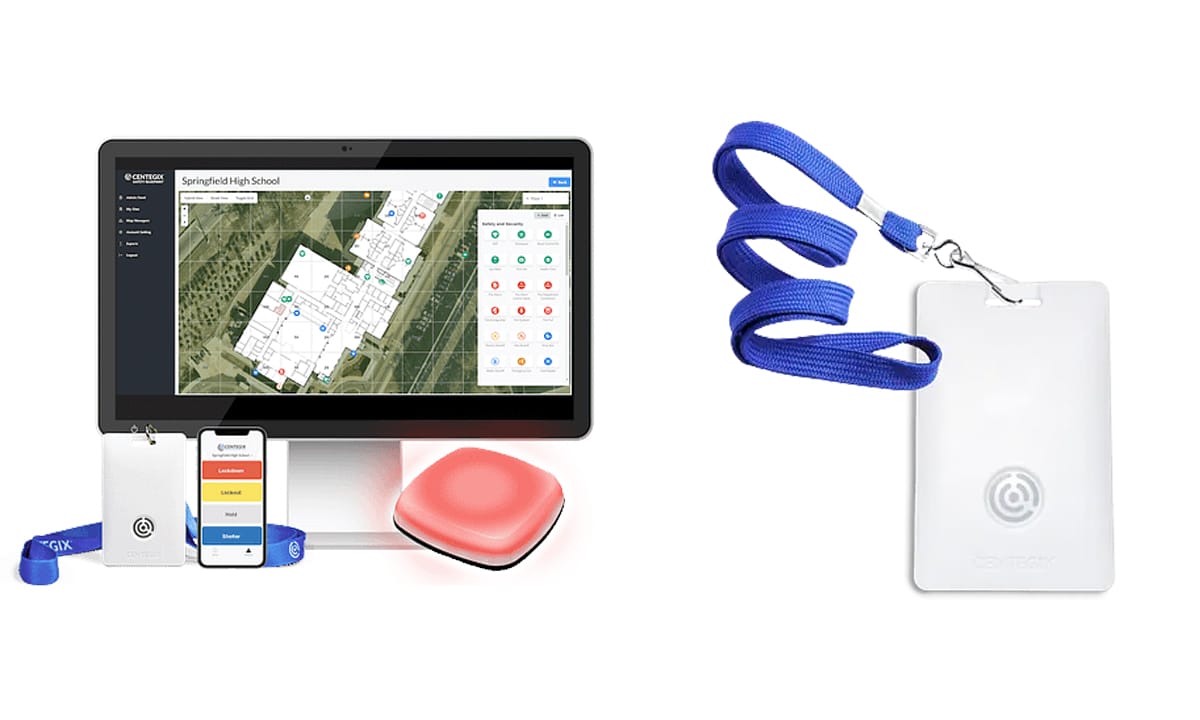North, South high school teachers and staff to wear panic buttons in coming school year
Coming to Bloomington’s two largest high schools this fall are wearable panic buttons for all staff members. MCCSC plans to eventually expand the technology to schools in addition to Bloomington High School North and Bloomington High School South.


School is back in session in two weeks for the Monroe County Community School Corporation (MCCSC). Coming to Bloomington’s two largest high schools this fall are wearable panic buttons for all staff members. MCCSC plans to eventually expand the technology to schools in addition to Bloomington High School North and Bloomington High School South.
CENTEGIX, an incident response company based in Georgia, designs and manufactures the devices. At its regular meeting in May, MCCSC’s board of trustees approved a contract with CENTEGIX, totaling $126,800 over five years.
All staff members in both schools will wear CENTEGIX’s CrisisAlert badges, which are similar in size to a few stacked credit cards. They feature a single button, and are designed to be worn with existing staff ID cards. That’s according to Matt Young, a regional sales representative for CENTEGIX. (Currently, staff typically wear IDs on a lanyard or clipped to clothing.)
Indiana is not one of the states that has passed legislation requiring an active alert warning system in schools.
In reply to an emailed question from The B Square, asking if the decision to adopt panic buttons is a reaction to something, MCCSC director of strategic communications Sarah DeWeese wrote, “The implementation of the CENTEGIX system is proactive and not responsive, as part of our ongoing efforts to continuously enhance our safety infrastructure.”
MCCSC is working with CENTEGIX to deploy the systems at North and South. This includes equipment installation and training.
DeWeese said, “MCCSC staff who are members of our first responder team will be trained in the system before the school year starts. That team will then train teachers at the beginning of the school year.”
The CENTEGIX contract says MCCSC has a responsibility to “inform all stakeholders about the decision to implement CrisisAlert” and to “keep stakeholders updated on the progress” of installation.
A person wearing a badge can trigger two types of alerts. Both are triggered by repeated button presses, and will use nearby locator devices to locate the badge. Young, the CENTEGIX representative, said infrastructure will be installed inside and outside the buildings, including athletic facilities and parking lots.
Pressing the button three times triggers a “staff alert.” That’s for localized, minor incidents, like medical emergencies, physical altercations, or spills that require custodial clean-up. This will notify only appropriate staff members as determined by the schools—administrators, health aides, custodians, security guards, among others.
Eight consecutive presses on the button initiates a campus-wide lockdown. A lockdown alerts all individuals within the school—staff, students, visitors—that there is an emergency, and that action needs to be taken. A lockdown sets off strobe lights around the school, a pre-recorded message is played over the intercom, and takes over networked devices—which could include student and staff computers—to display specific instructions for the lockdown. MCCSC can decide whether or not a lockdown also notifies law enforcement.
Staff members responsible for responding to these situations—potentially including administrators, student resource officers, custodians, and health aides—can be notified on their desktops and cell phones. Notified staff will see which staff member reported the incident and their location on a map.
If a badge is misplaced or lost, staff are supposed to notify administrators, who can deactivate the badge within 20-30 seconds, Young said, to prevent inadvertent button presses. The system has redundancy, and will continue to function in the case of a power or internet outage.
CENTEGIX says in its documentation that the batteries in the badges last one to two years. Young said a network is created at each school to connect and locate the badges, using a combination of Bluetooth and LoRaWAN technology.
In addition to the CrisisAlert badges, CENTEGIX’s safety platform includes the development of a “safety blueprint,” which takes existing floor plans for each building and adds safety information like the locations of fire extinguishers, AEDs, gas shutoffs, and other safety devices. The company also offers visitor management, but MCCSC has not opted for that service at this time, according to Young.
When The B Square interviewed Young, the CENTEGIX representative who is managing the MCCSC account, he pointed to the Apalachee High School shooting in Georgia in September 2024. The first call the Barrow County fire department received about the incident was from the CENTEGIX system, according to a social media release. School and community officials credited the panic badges for the prompt response time—the first fire unit arrived on scene 10 minutes after shots were first heard.
Young said that after the Apalachee incident took place, “we had people come up to us say that, ‘Hey, because of your system, because of us seeing strobes, we did not go out in the hallway when we heard commotion.’” He said, “[CENTEGIX] was credited by multiple staff members, including the superintendent, that we did save lives in that situation.”
CENTEGIX has its system installed in over 800 school districts across the U.S., according to a press release. Young told The B Square that the company has over 700,000 badge users, including schools, government, and healthcare. “I would say that 90 to 95 percent of our badge wearers are in K-12,” he said.
In the 2024-25 school year, Young said, there were 265,000 alerts in the system nationwide. Of those, he said less than one percent were lockdowns—the rest were staff alerts.
The company also says its emergency strobes “follow all guidelines recommended by the Epilepsy Foundation, including having a flash rate below 2 Hertz (120 flashes/minute) with additional breaks according to recommendations provided by the Epilepsy Foundation.”
Referring to North and South, Young said, “I know that both schools are pretty excited to get it going.”
Young continued, “I know ... when I was talking to Chris [Finley], that the intention was, you know, ‘Hey, let’s get this going in the two high schools, and then we can bring it to the rest of the district.”
Finley served as MCCSC’s executive director of coordinated school services and strategic partnerships until the end of June. Taking over Finley’s role is Eric Gilpin, who is now director of secondary education and school safety. Gilpin was previously director of secondary education.
The first day of school for MCCSC is Wednesday, Aug. 6.




Comments ()